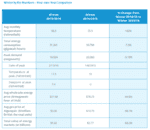Winter 2015/2016 recap: New England power system performed well and prices remained low
 Compared to winters past, the winter of 2015-2016 featured above-average temperatures and a brief cold snap in February. Many in the region have called it the “the winter that wasn’t.”
Compared to winters past, the winter of 2015-2016 featured above-average temperatures and a brief cold snap in February. Many in the region have called it the “the winter that wasn’t.”
According to the National Oceanic and Atmospheric Administration (NOAA), this winter was the warmest on record in the US. The average temperature in the lower 48 states was 36.8°F, which is 4.6°F above the 20th-century average. That beats the previous record of 36.5 degrees set in the winter of 1999-2000.
Spurring the increase in temperatures was an El Niño climate cycle, which is characterized by warmer waters in the Pacific Ocean. This can affect New England winters by blocking the cold air north of our region. In fact, according to NOAA, every New England state had its warmest winter on record.
The warmer weather and other factors helped ensure that generating resources and the high voltage power grid performed well through December, January, and February, and that sufficient resources were available to meet peak demand and provide reserves during winter. The coldest weather didn’t arrive until mid-February when days are longer and electricity consumption is lower.
The third Winter Reliability Program (WRP), which provides incentives to generators to store fuel oil or to contract for liquefied natural gas (LNG) before winter begins, provided the assurance that generators would have the fuel they needed to operate during times of system stress.
“Because the weather this winter was so mild, seasonal demand for electricity was low and New England experienced no operational problems,” said Peter Brandien, vice president of systems operations at ISO New England. “Typically, when New England has a sustained cold period, it becomes more difficult for natural gas generators to get gas and oil-fired generators may run low on fuel. Those things didn’t happen this winter. Natural gas was available – and at a much lower price – and consumer demand was down.”
Greater fuel availability, lower fuel prices helped reduce wholesale electricity prices
Wholesale electric energy prices during winter 2015-2016 were well below the previous winter’s prices: the average cost of wholesale electric energy from December 2015 through February 2016 was $27.58 per megawatt-hour (MWh), while last winter’s average price was $78.25 per MWh.
The total cost of wholesale energy from December 2015 through February 2016 was $1.02 billion, 63.2% less than the $2.77 billion for the same three-month period the previous winter. The overall lower wholesale energy costs can be attributed to lower natural gas prices, accessible supplies of LNG to the region and lower demand. For more information on wholesale prices, see the “Winter by the Numbers” tables below.
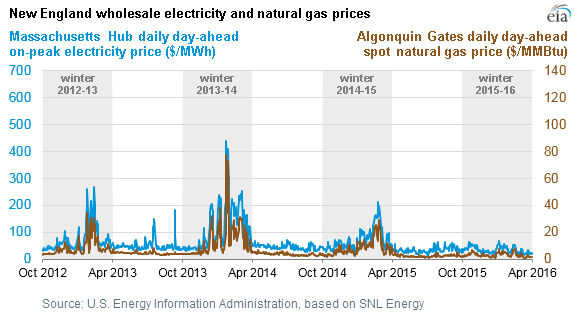
According to the Energy Information Administration (EIA), “wholesale natural gas and power prices in the Northeast United States remained relatively low this winter, absent the large spikes that have occurred during recent winters.”
The Federal Energy Regulatory Commission reported in its 2015-2016 Winter Energy Market Assessment in October 2015 that winter futures prices in New England for both natural gas and electricity would be much lower for winter 2015-2016 than for the previous winter, but still higher than futures prices in other areas of the country. This may help to explain the levels of LNG imports into New England this past winter.
From December 2015 through February 2016, New England saw the injection of about 22.6 Bcf of gas from LNG imports into the region—less than the 31.6 Bcf of gas from LNG imports the previous winter – but more than the 16 Bcf during the winter of 2013-2014, when the region saw the highest power and natural gas prices since 2003.
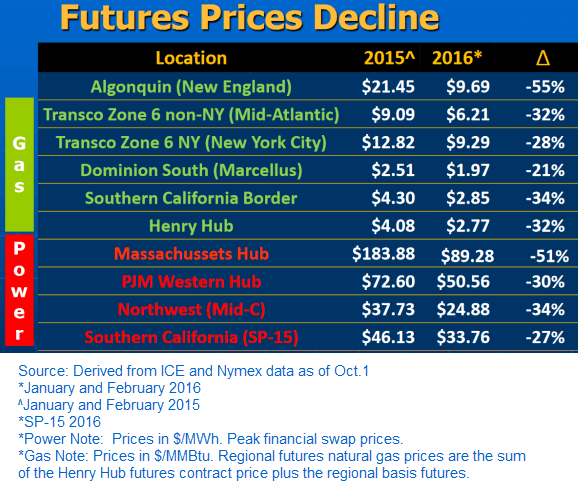
2015-2016 winter weather
Here’s how the mild weather affected winter electricity usage:
Winter peak demand occurred on Monday, February 15, 2016 at 19,524 MW. The previous winter’s peak of 20,583 MW occurred on January 8, 2015. The all-time peak in winter demand occurred on January 15, 2004, at 22,818 MW.
With an average monthly temperature of 31.7°F in New England, February 2016 was still warmer than the average February for each of the last three winters.
Over the course of the winter (December, January, and February), New Englanders used 31,241 gigawatt hours (GWh) of electricity, much less than the 33,709 GWh used during the previous winter, according to ISO New England figures.
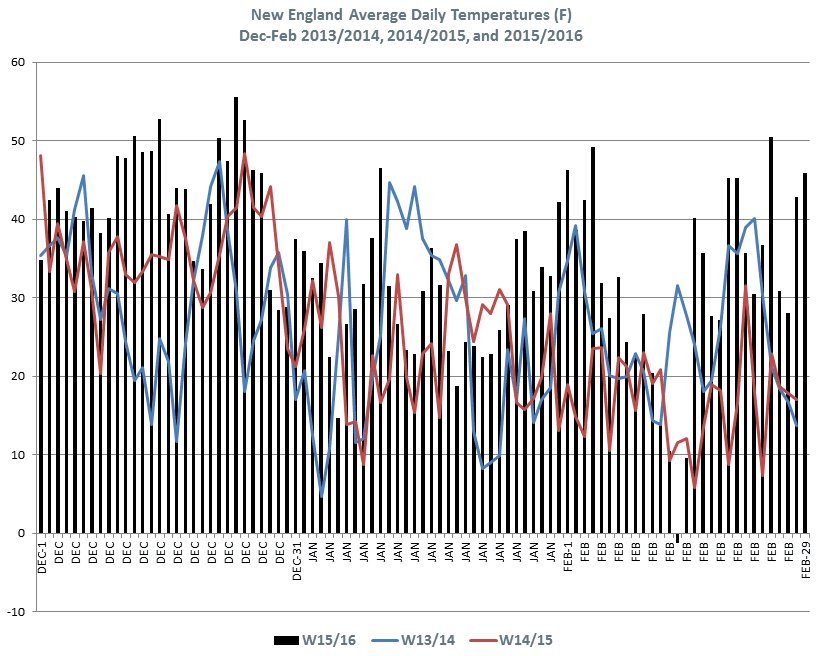
Implications for future winters
While winter 2015-2016 provided above-normal temperatures that helped the region avoid stresses on the power system, New England can’t always count on having mild winters.
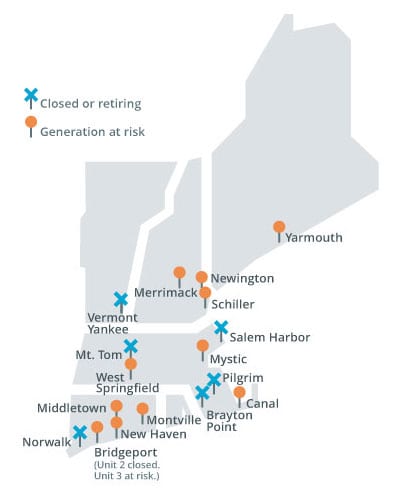 The Winter Reliability Program will help ensure reliable operations until 2018, when capacity market performance incentives go into effect, but other factors will also come into play.
The Winter Reliability Program will help ensure reliable operations until 2018, when capacity market performance incentives go into effect, but other factors will also come into play.
More than 4,200 MW of power plants that use fuels other than natural gas will retire by 2019, while the pipelines bringing natural gas into the region from the west are running at or near capacity most winter days just to meet heating demand. Increased LNG imports can help meet natural-gas-fired generators’ need for fuel, but LNG is a globally-priced commodity. Its availability in New England depends on worldwide demand and prices.
More information
For background on how natural gas infrastructure constraints, resource retirements, and other challenges are affecting the grid, see the 2016 Regional Electricity Outlook.
Winter by the numbers: monthly
(Click to see full-size table.)
Winter by the numbers: year-over-year comparison
(Click to see full-size table.)
- Categories
- Inside ISO New England
- Tags
- energy efficiency, peak demand, system operations, wholesale markets, wholesale prices, winter


